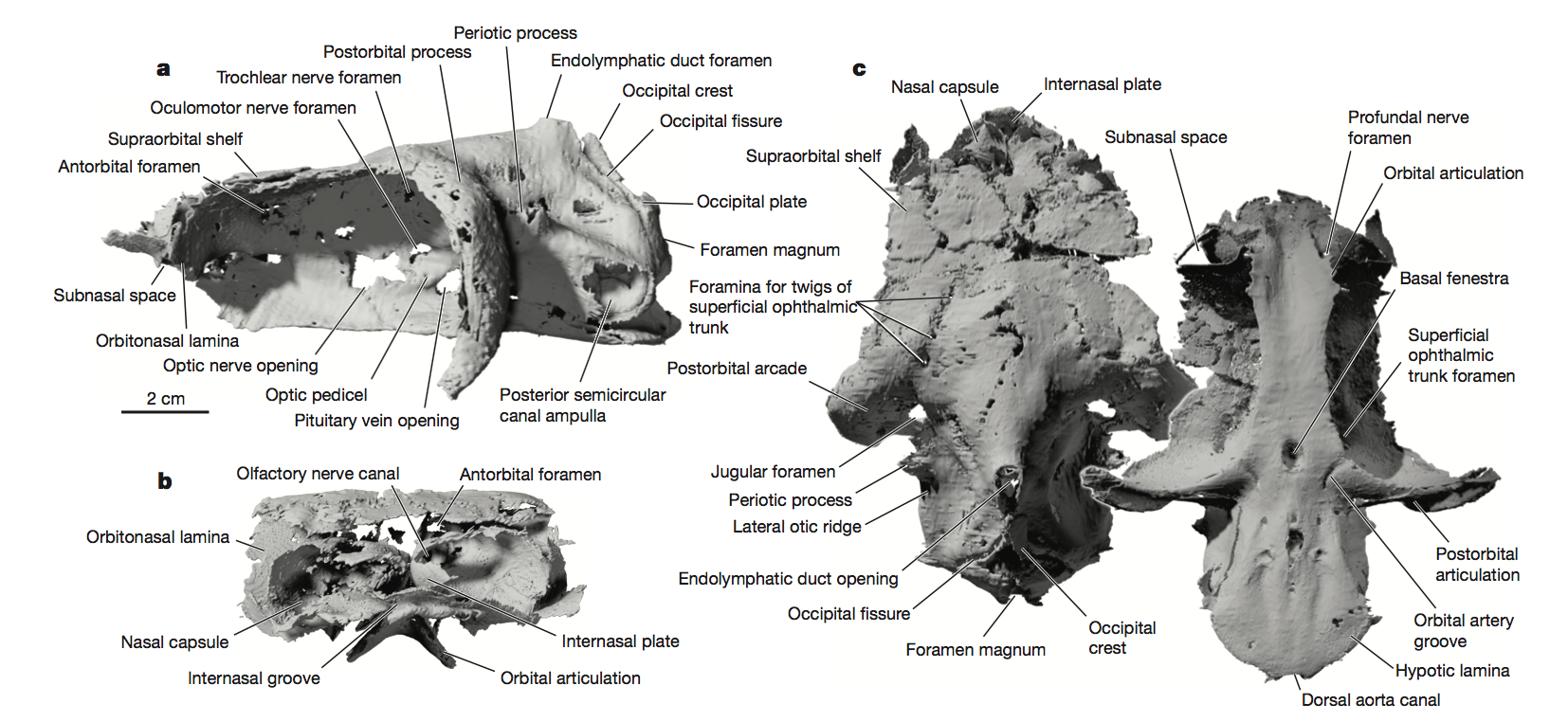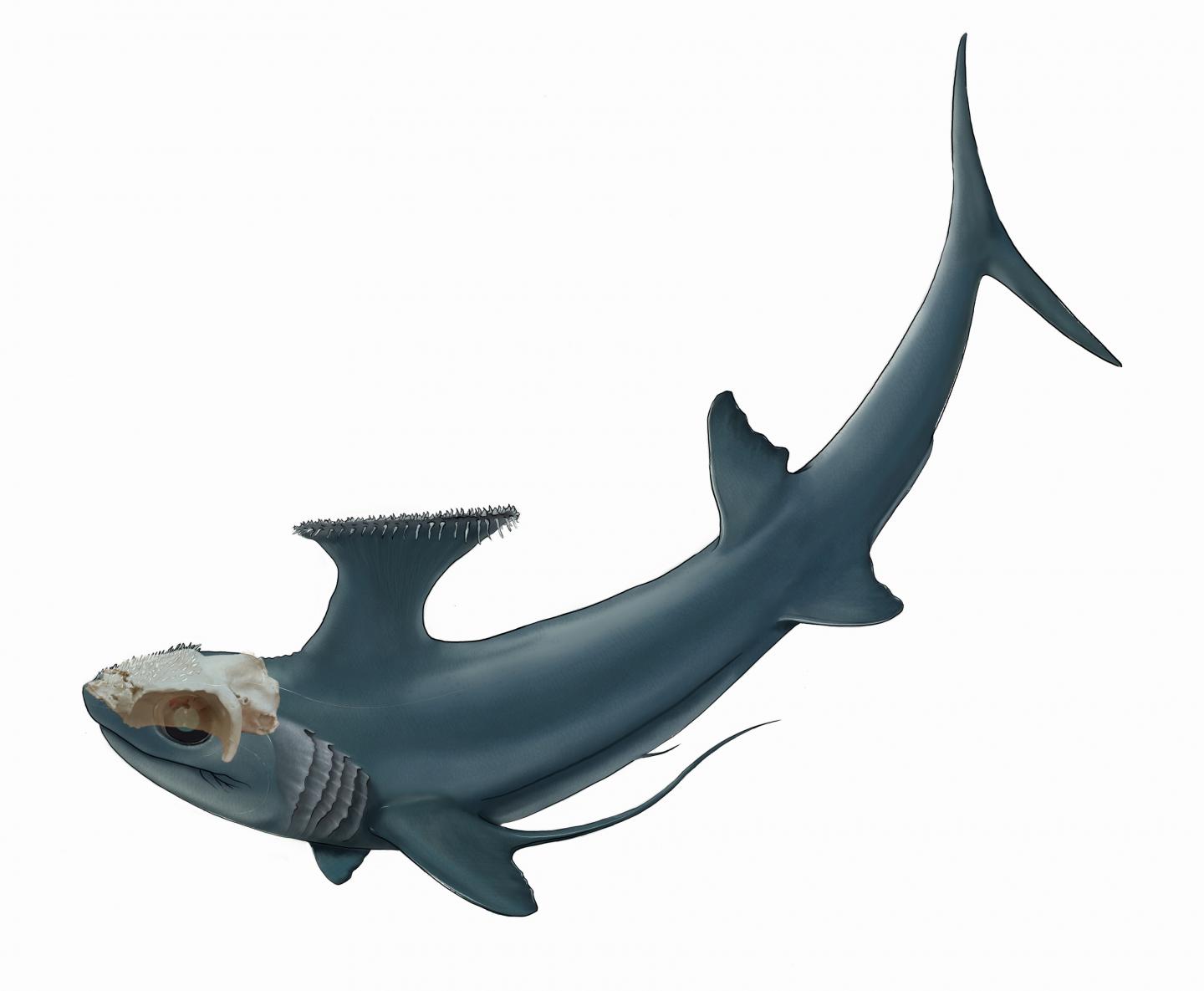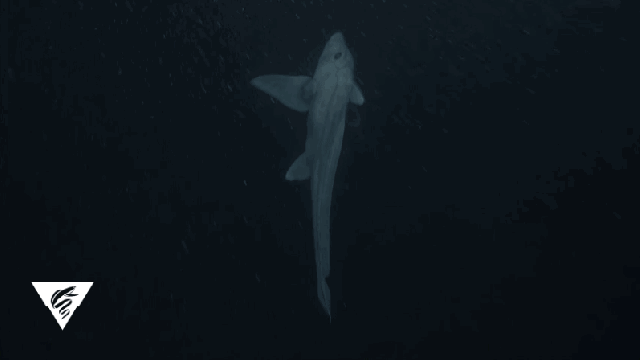Analysis of a well-preserved ancient skull shows that ghost sharks — a group of elusive deep sea fish with abnormally large eyes and wing-like fins — are descended from a bizarre shark-like fish that lived 280 million years ago.
The first-ever video footage of a ghost shark. (Credit: Monterey Bay Aquarium Research Institute (MBARI))
A new study published in the journal Nature is offering unique insights into an unusual animal that’s not often glimpsed by human eyes. A research team led by Michael Coates from the University of Chicago Medical Center has found that ghosts sharks, also known as chimaeras, are descended from a 280 million-year-old fish dubbed Dwykaselachus oosthuizeni (pronounced dwike-a-selak-us oos-thwee-zen-ee). Not surprisingly, these ancient creatures were just as strange as their modern day descendants.
Chimaeras belong to a family of unusual deep-sea fishes whose bodies are stiffened not by bones, but by plates and bone-like bits of cartilage. Though often referred to as ghost sharks, they’re not actually sharks, having diverged from a common ancestor hundreds of millions of years ago. These animals, which can grow as long as 1.5m in length, feature large eyes, bird-like fins and tooth plates used for grinding prey. Males have a retractable penis-like appendage on their foreheads. Marine biologists estimate that nearly 50 species of ghost sharks live in the oceans around the world, but sightings have been sparse owing to the animals’ preference for deep waters.
Very little is known about chimaeras and their evolutionary origins, but we do know they are chondrichthyes, a group of fishes that also includes sharks and rays. Scientists have struggled to trace the ghost shark family tree owing to a dearth of fossilised remains; their bodies are made of cartilage, which doesn’t preserve as well as bone. The odd physical features of chimaeras, including exceptionally large eyes with orbits (eye sockets) so big they actually distort the shape of the brain, aren’t found in the limited fossil record.
“Chimaeroids belong somewhere close to the sharks and rays, but there’s always been uncertainty when you search deeper in time for their evolutionary branching point,” noted Coates in a statement. “Chimaeras are unusual throughout the long span of their fossil record. Because of this, it’s been difficult to understand how they got to be the way they are in the first place.”

The braincase of Dwykaselachus oosthuizeni modelled from high-resolution CT scans. (Image: Michael I. Coates et. al., 2017)
A CT scan of a beautifully well-preserved fish, the aforementioned D. oosthuizeni, is finally shedding light on the early evolution of shark-like fishes, and also on jawed vertebrates as a whole. The skull was found in a rock by a South African amateur palaeontologist in the 1980s, but access to CT scanners and powerful new computer rendering technologies made the new analysis possible.
Looking at this skull from the outside, the researchers noted a striking resemblance to a family of prehistoric sharks known as symmoriiforms, which emerged over 300 million years ago. These now-extinct sharks featured exaggerated and oddly shaped dorsal fin spines, some resembling sailing booms and others ironing boards. But scans of the skull’s interior revealed some very chimaera-like characteristics. In fact, these characteristics were so similar to modern day chimaeras that the researchers believe this ancient creature wasn’t a shark at all, but a very early ancestor of chimaeras.

Artist’s impression of Dwykaselachus oosthuizeni, an early chimaera and likely ancestor of modern ghost sharks. (Image: Kristen Tietjen)
In addition to the exceptionally large eye orbits, the researchers documented other chimaera-like characteristics, including the tell-tale shapes of the major cranial nerves, nostrils and inner ears. The scans suggest that D. oosthuizeni diverged from symmoriiform sharks, and later evolved into the ghost sharks we see today (albeit very rarely).
The researchers suspect that D. oosthuizeni‘s large orbits may have been an adaptation to dimly-lit waters, allowing them to forage for fish in dark conditions. This implies that symmoriiforms adapted to light-limited conditions (likely deep water) earlier in evolutionary history than previously thought.
[Nature]
